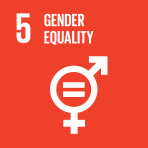Achievements, deficiencies and inequalities in educational achievement among children and adolescents

- Author: United Nations
- Main Title: Social Panorama of Latin America 1999-2000 , pp 172-187
- Publication Date: March 2001
- DOI: https://doi.org/10.18356/7e8fc2cf-en
- Language: English
Despite the progress made by the Latin American countries in the 1990s in improving access to and completion of primary education and coverage of secondary education, some significant shortcomings remain in regard to the acquisition of educational capital. The deficiencies are greater in the more advanced levels of primary education, as evidenced in the high percentage of children who do not complete the first four grades or fall behind in doing so, and in the even greater proportion of children who do not finish primary education. On average, it is estimated that in 2000, one of every six children in urban areas will have dropped out of or fallen behind in primary school, and in rural areas, the figure is 40%. As regards secondary education (which is now the minimum level required to find a decent job), the shortcomings are even more serious: only half of all 20–year–olds in urban areas and one fourth in rural areas will finish high school.
-
From This Site
/content/books/9789213633816s013-c011dcterms_title,dcterms_subject,pub_keyword-contentType:Journal -contentType:Contributor -contentType:Concept -contentType:Institution105



